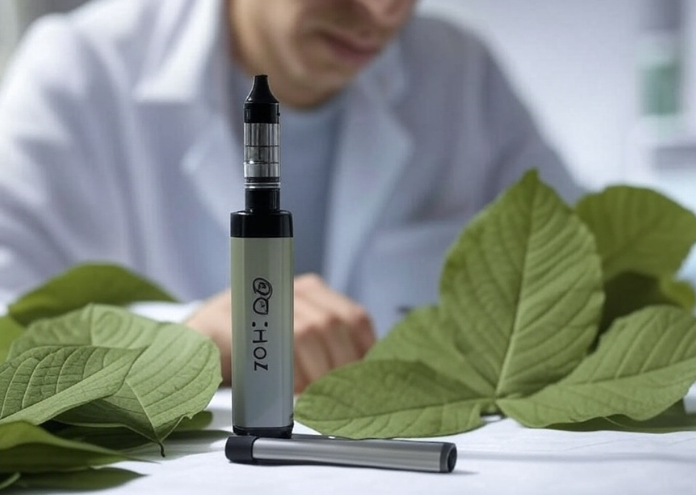Kratom (Mitragyna speciosa), a tropical tree native to Southeast Asia, has garnered attention in recent years for its wide range of effects, from pain relief to mood enhancement. While kratom has been used for centuries in traditional medicine, modern science is just beginning to uncover how it works within the body. The key to understanding kratom lies in its unique chemical composition and how it interacts with various receptors in the brain. This blog explores the science behind how kratom works.
1. Alkaloids: The Active Ingredients
The primary active compounds in kratom are alkaloids, specifically mitragynine and 7-hydroxymitragynine. These alkaloids are responsible for kratom’s range of effects and its interaction with the body’s systems.
- Mitragynine: The most abundant alkaloid in kratom, mitragynine acts as a partial agonist at the body’s opioid receptors. Unlike traditional opioids, mitragynine doesn’t fully bind to these receptors, which is why kratom has a different risk profile compared to stronger opioid medications.
- 7-hydroxymitragynine: Though present in smaller amounts, this alkaloid is much more potent than mitragynine. It is believed to play a significant role in kratom’s pain-relieving and sedative effects.
2. Interaction with Opioid Receptors
Kratom’s interaction with mu, delta, and kappa opioid receptors in the brain is key to its effects. These receptors are part of the body’s endogenous opioid system, which plays a crucial role in regulating pain, mood, and stress responses.
- Mu opioid receptors: Kratom binds to these receptors, which are responsible for pain relief and euphoria. This explains why kratom is often used as an alternative to manage chronic pain.
- Delta opioid receptors: These receptors influence mood and anxiety. Kratom’s binding to delta receptors is thought to contribute to its mood-enhancing effects.
- Kappa opioid receptors: Kappa receptors are involved in stress and anxiety regulation. While kratom does not bind as strongly to these receptors, its interaction here may contribute to stress relief.
3. Dual Action: Stimulant and Sedative Effects
One of kratom’s unique qualities is its dual action, where it can act as both a stimulant and a sedative depending on the dose.
- At low doses (1-5 grams), kratom acts primarily as a stimulant. This is attributed to mitragynine’s interaction with adrenergic receptors, which are involved in the release of adrenaline. This leads to increased energy, focus, and alertness, much like caffeine.
- At moderate to high doses (5-15 grams), kratom shifts towards a sedative effect. At these levels, the effects of 7-hydroxymitragynine become more pronounced, leading to pain relief, relaxation, and sometimes drowsiness. This makes higher doses of kratom useful for managing pain, anxiety, and insomnia.
4. Dopamine and Serotonin Pathways
In addition to its effects on opioid receptors, kratom also influences dopamine and serotonin pathways. These neurotransmitters are key to regulating mood, motivation, and emotional well-being.
- Dopamine: By increasing dopamine levels, kratom can improve mood, reduce anxiety, and provide a sense of well-being. This is one reason why people use kratom to manage depression or social anxiety.
- Serotonin: Kratom also mildly influences serotonin receptors, which can contribute to feelings of calmness and relaxation. However, its impact on serotonin is not as pronounced as traditional antidepressants.
5. Anti-inflammatory and Antioxidant Effects
Research has shown that kratom contains anti-inflammatory and antioxidant properties, which contribute to its health benefits. Some alkaloids in kratom can help reduce inflammation, making it helpful for conditions like arthritis or inflammatory bowel disease. Additionally, kratom’s antioxidant effects help neutralize free radicals in the body, which can reduce oxidative stress and support overall health.
6. Interaction with Other Receptors
Kratom also interacts with other receptors in the body, such as adenosine and serotonergic receptors, which contribute to its broad spectrum of effects. By influencing these receptors, kratom may have potential benefits for anxiety relief, mood enhancement, and even improving cognitive function.
- Adenosine receptors: These receptors are involved in the regulation of energy and mood. By interacting with adenosine receptors, kratom may help reduce anxiety and improve relaxation.
- Serotonergic receptors: While kratom’s effects on serotonin are less understood, some strains of kratom may mildly stimulate serotonergic receptors, leading to improved mood and emotional stability.
7. Variations by Strain and Dosage
Not all kratom strains work the same way. Strains such as Red Vein, White Vein, and Green Vein offer varying levels of stimulation or sedation due to differing alkaloid concentrations.
- Red Vein Kratom: Known for its calming and pain-relieving effects, red vein kratom tends to have a higher concentration of 7-hydroxymitragynine, making it more sedative.
- White Vein Kratom: This strain is often used for its stimulating effects, as it tends to have a higher concentration of mitragynine, which increases energy and focus.
- Green Vein Kratom: A balanced strain, green vein kratom offers both stimulating and pain-relieving effects, making it a versatile option.
Conclusion
Kratom works through a combination of complex interactions with the body’s opioid, dopamine, serotonin, and other receptor systems. Its versatility allows it to be used for pain relief, mood enhancement, and energy boosting, depending on the dose and strain. However, like any substance, kratom should be used responsibly and with caution, especially considering its potential for dependency at higher doses.
By understanding how kratom works, users can make informed decisions about how to use it effectively and safely for their individual needs. As research continues, we are likely to uncover even more about the intricate ways this ancient herb interacts with the human body.














